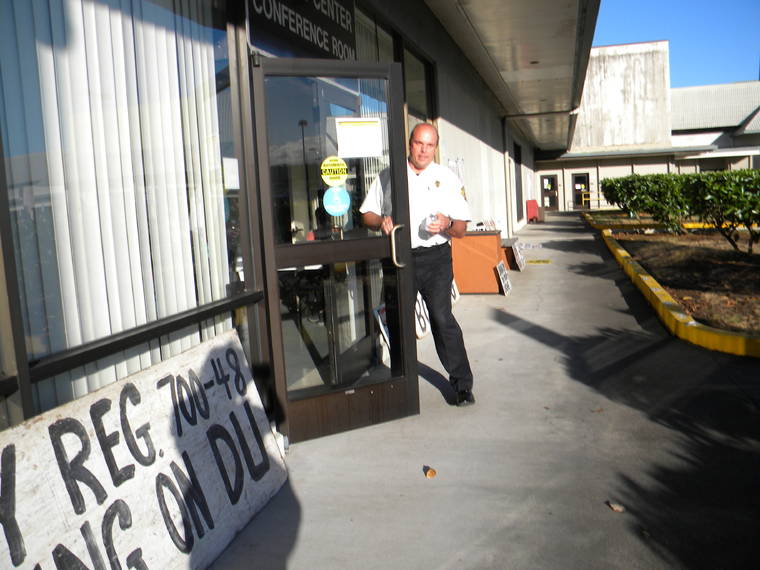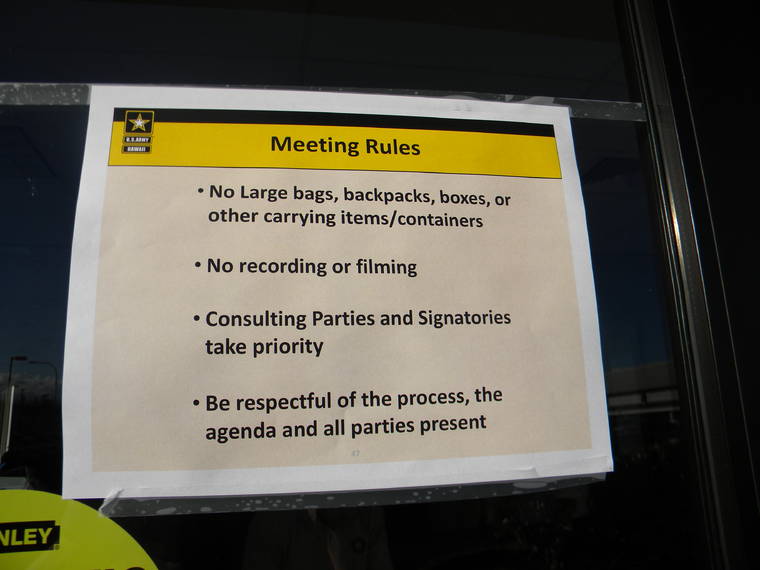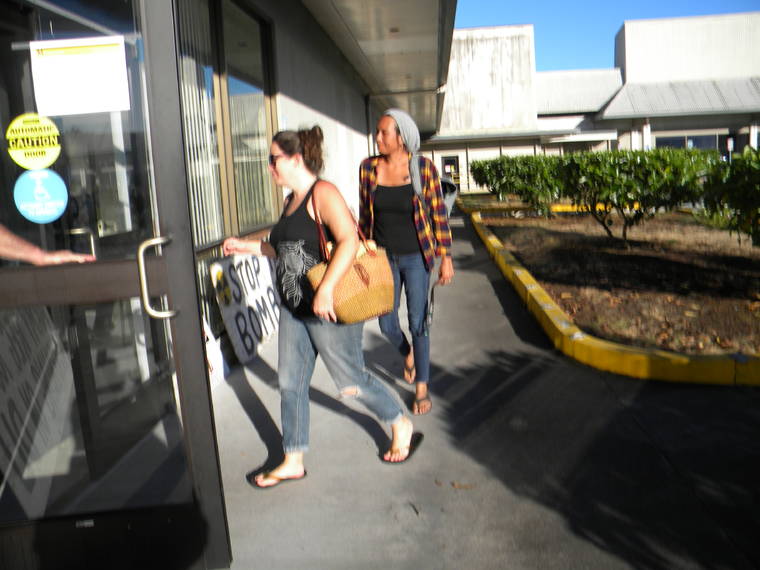Army boots WHT from public meeting
HILO — West Hawaii Today was banned from a meeting Thursday outlining Army plans to manage historic resources at Pohakuloa Training Area and Kawaihae Military Reservation.
A reporter was told, “This is not a media event,” as she stood inside an Aupuni Center meeting room where the general public was freely being allowed in. The reporter questioned the decision, but was told the participating parties may not feel comfortable expressing their opinions in the presence of the media.
“No one in our community should be treated as a second-class citizen,” said Brian Black, attorney and director of the Civil Beat Law Center for the Public Interest, when asked to weigh in Friday. “If a government agency opens a meeting to the general public, it cannot pick and choose who it will let attend.”
Some 75 to 100 people were in attendance, according to Jim Albertini, an activist who has frequently been at odds with the military. The meeting was originally intended to be limited to consulting parties who are on a list, but it was opened to the public prior to the reporter being told to leave.
“The meeting was a legal requirement of the military,” Albertini said on his Facebook page. “They tried to exclude the public but people would not have it. They demanded entry.”
PTA Public Affairs Officer Michael Donnelly put the audience count at fewer than 50. He acknowledged that not all attendees were consulting parties on the list, saying they were guests of consulting parties.
“This was a ‘consultation meeting’ with and for consulting parties and signatories to the training programmatic agreement only,” Donnelly said. “This was not a general public meeting, and this same information was communicated to all concerned well prior to the consultation meeting.”
At least one person in the audience videotaped the meeting and said Friday she’s working on the footage to distribute on YouTube and elsewhere. Lindafaye Kroll, a registered nurse who heads a nonprofit protesting bombing on PTA, said she’s a volunteer producer at Na Leo public television and hopes to publish footage there as well.
“This is a dog and pony show,” Kroll said. “They’re all set up to lie to us.”
Annual meetings are covered by Section 106 of the National Historic Preservation Act, which requires annual reports for four years of steps to comply with its programmatic agreement. The draft agreement lays out how the Army proposes to avoid, minimize and resolve any potential effects routine training and related activities may have on historic properties.
Protocols follow the standard Section 106 process and call for notifying the consulting parties, Native Hawaiian organizations, the State Historic Preservation officer and Advisory Council of the plans to find out more about the area’s cultural and archaeological resources. A site study is then conducted before the same consulting parties review the findings.
One of the participants was Kehaulani, who declined to give her last name. Interviewed outside the meeting, she said she attends PTA meetings mainly to “show face” and remind the military she’s watching.
“They already know what they’re going to do,” she said. “It’s all for appearances.”
An annual report, covering from Sept. 27, when the agreement went into effect, and Dec. 31, listed 20 “items of concern” involving unexploded ordnance at PTA. Two were deemed safe to remove and were detonated at Range 9, while others had to be blown in place, the report said.
“No potential historic properties have been identified in the vicinity of any of the items of concern,” the report said. “No historic properties were affected by removal or detonation of any of the items identified.”
The two-page report further states that no disputes or objections regarding the implementation of the programmatic agreement were received during the reporting period, no inadvertent or post-review discoveries were made and two training sessions were held for range staff.
Julie Taomia, cultural resource manager for U.S. Army Garrison Pohakuloa, when asked about the authority to close a meeting to the media, cited 36 CFR, part 800 of federal law.
That law states in part, “The views of the public are essential to informed Federal decisionmaking in the section 106 process. The agency official shall seek and consider the views of the public in a manner that reflects the nature and complexity of the undertaking and its effects on historic properties, the likely interest of the public in the effects on historic properties, confidentiality concerns of private individuals and businesses, and the relationship of the Federal involvement to the undertaking.”
“The agency official must, except where appropriate to protect confidentiality concerns of affected parties, provide the public with information about an undertaking and its effects on historic properties and seek public comment and input. Members of the public may also provide views on their own initiative for the agency official to consider in decisionmaking,” the law states.
The cited law doesn’t address the issue of barring media from a meeting that’s opened to the public.
After being told by both Taomia and Donnelly that she couldn’t stay, the reporter left as the meeting began.







This was a ‘dog & pony’ show by the Army, a presentation mandate for continued use of overtly large land area and live ammunition. Hard to promote the concept of ‘respectful use of the Land’ while blasting sizeable pukas with howitzers on the firing range. Previous use of DU proves that stewardship tainted.
The Press is one of the Public’s most important resources in distributing information pertinent to their communities. The Military is funded by the Public. The Military is using the Public’s land. Continued use of that land requires Public input. For the Military to prohibit Press from meetings discussing land-use is a disgrace for the entire command-chain to the soldier prohibiting news-reporter.